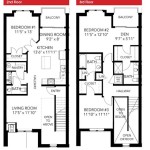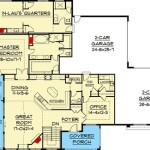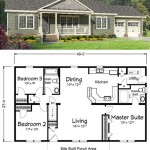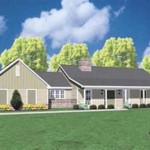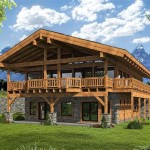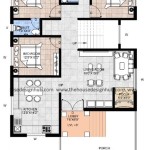Detached Mother-In-Law Suite Plans: A Comprehensive Guide
Detached mother-in-law suites, also known as accessory dwelling units (ADUs), granny flats, or backyard cottages, are self-contained living spaces located on the same property as a primary residence but physically separated from it. These structures offer numerous benefits, from providing accommodation for aging parents or adult children to generating rental income. Careful planning is crucial to ensure the project’s success. This article delves into the key aspects of detached mother-in-law suite plans, offering guidance on navigating the design, regulations, and construction phases.
Understanding the Benefits and Considerations
Before embarking on the design process, it’s important to weigh the advantages and disadvantages of a detached mother-in-law suite. The benefits are manifold. Firstly, they offer independent living for family members, fostering a sense of privacy and autonomy while maintaining close proximity. This can be particularly beneficial for elderly parents who require assistance but wish to retain their independence, or for young adults returning home who need a transition space. Secondly, detached suites can be a valuable source of rental income, providing a passive revenue stream for homeowners. Thirdly, they can increase the overall property value, making the home more attractive to potential buyers. Finally, they can provide flexible living space that can be adapted to various needs over time, such as a home office, guest suite, or hobby room.
However, potential challenges also exist. Constructing a detached suite involves significant financial investment, requiring careful budgeting and cost management. Local zoning regulations and building codes often dictate the size, layout, and permissible uses of ADUs, potentially limiting design options. Privacy concerns can arise if the suite is not properly situated or designed, impacting both the primary residence and the ADU. Construction disruptions can also be a factor, requiring homeowners to tolerate noise, dust, and contractor presence during the building phase. Furthermore, managing tenant relationships, if the suite is rented out, requires time and effort.
Key Elements of Detached Mother-In-Law Suite Plans
A well-developed plan is essential for a successful detached mother-in-law suite project. The plans should comprehensively address all aspects of the design, construction, and functionality of the unit. This includes architectural drawings, structural engineering plans, plumbing and electrical diagrams, and site plans. The architectural drawings should depict the layout, dimensions, and aesthetic features of the suite, ensuring compliance with local building codes and homeowner preferences. Structural engineering plans are crucial for ensuring the structural integrity of the building, particularly in regions prone to earthquakes, high winds, or heavy snow. Plumbing and electrical diagrams outline the location of pipes, fixtures, wiring, and outlets, ensuring safe and efficient operation of these systems. The site plan illustrates the location of the suite on the property, taking into account setbacks, easements, landscaping, and access points.
The layout of the suite should be carefully considered to maximize functionality and comfort. A typical suite includes a living area, kitchen, bedroom, and bathroom. Universal design principles should be incorporated to ensure accessibility for individuals with disabilities or mobility limitations. This includes features such as wider doorways, grab bars in the bathroom, and a zero-step entry. Adequate storage space is also important, particularly in smaller suites. Natural light and ventilation should be maximized to create a bright and airy living environment. Energy-efficient features, such as high-performance windows, insulation, and appliances, can reduce utility costs and minimize environmental impact.
Attention should also be paid to the exterior design of the suite. The suite should complement the architectural style of the primary residence and blend seamlessly with the surrounding landscape. The materials used for the exterior should be durable, low-maintenance, and aesthetically pleasing. Landscaping can also be used to enhance the privacy and appeal of the suite. A well-designed landscape can create a buffer between the suite and the primary residence, providing a sense of seclusion and tranquility.
Navigating Zoning Regulations and Building Codes
Local zoning regulations and building codes play a significant role in determining the feasibility and scope of a detached mother-in-law suite project. Before commencing any design or construction work, it is imperative to thoroughly research and understand the applicable regulations in the specific jurisdiction. Zoning ordinances typically regulate the size, location, and permitted uses of ADUs. These ordinances may specify maximum lot coverage, setback requirements, height restrictions, and parking requirements. Some jurisdictions may also impose restrictions on the number of ADUs allowed per property or within a certain geographic area.
Building codes establish minimum standards for the design and construction of buildings to ensure safety, structural integrity, and energy efficiency. These codes cover a wide range of topics, including structural engineering, fire safety, plumbing, electrical systems, and mechanical systems. Compliance with building codes is mandatory and requires obtaining the necessary permits and inspections. The permitting process typically involves submitting detailed plans and specifications to the local building department for review and approval. Inspections are conducted at various stages of construction to ensure that the work is performed in accordance with the approved plans and applicable codes. Failure to comply with zoning regulations or building codes can result in fines, stop-work orders, or even the demolition of the unauthorized structure.
Many municipalities have specific ADU ordinances that streamline the permitting process and provide incentives for homeowners to construct ADUs. These ordinances may offer expedited permit review, reduced fees, or pre-approved building plans. Some jurisdictions also offer financial assistance, such as grants or loans, to help homeowners finance the construction of ADUs. It is highly recommended to consult with a local planning official or building inspector to obtain accurate and up-to-date information on the applicable regulations and requirements. Engaging a qualified architect or contractor with experience in ADU construction can also be beneficial in navigating the complex regulatory landscape.
Cost Considerations and Budgeting
The cost of constructing a detached mother-in-law suite can vary significantly depending on several factors, including the size and complexity of the design, the materials used, the location of the property, and the prevailing labor rates. A realistic budget is essential for ensuring that the project remains financially viable. Construction costs typically account for the largest portion of the overall budget. These costs include materials, labor, permits, inspections, and contractor fees. The cost of materials can range from basic and affordable options to high-end and luxurious choices, impacting the overall expense. Labor costs vary depending on the skill level of the tradespeople involved and the demand for their services. Permit and inspection fees can also add to the overall cost, depending on the jurisdiction.
Design fees, including architectural and engineering services, should also be factored into the budget. These fees can range from a percentage of the total construction cost to a flat fee based on the scope of work. Site preparation costs, such as grading, excavation, and utility connections, can also be significant, particularly if the property has challenging terrain or requires extensive modifications. Landscaping costs should also be considered, including the cost of plants, mulch, irrigation systems, and labor. Contingency funds should be set aside to cover unexpected expenses or unforeseen issues that may arise during construction. A general rule of thumb is to allocate at least 10% of the total budget to contingency.
Financing options for detached mother-in-law suite construction include personal savings, home equity loans, construction loans, and government-sponsored programs. Home equity loans allow homeowners to borrow against the equity in their primary residence, providing a relatively low-interest rate and flexible repayment terms. Construction loans are specifically designed to finance construction projects and are typically short-term loans with higher interest rates. Government-sponsored programs, such as those offered by the Federal Housing Administration (FHA) or the Department of Veterans Affairs (VA), may provide financing options for eligible homeowners. Obtaining multiple quotes from contractors and suppliers is essential for ensuring competitive pricing. Value engineering, which involves exploring alternative materials and methods to reduce costs without compromising quality, can also help to optimize the budget.
Selecting a Qualified Contractor
Choosing a qualified and experienced contractor is crucial for ensuring the successful completion of a detached mother-in-law suite project. A reputable contractor will possess the necessary skills, knowledge, and resources to manage the project effectively and deliver high-quality results. Start by obtaining referrals from friends, family, or neighbors who have had similar construction projects completed. Online review sites and professional organizations, such as the National Association of Home Builders (NAHB), can also provide valuable information on local contractors.
Before making a final decision, interview several contractors and request bids for the project. The bids should include a detailed breakdown of the costs, including materials, labor, permits, and insurance. Verify the contractor's license and insurance coverage to ensure that they are properly qualified to perform the work. Check the contractor's references and contact previous clients to inquire about their experience with the contractor. Review the contractor's portfolio to assess the quality of their workmanship and the types of projects they have completed.
A written contract is essential for protecting both the homeowner and the contractor. The contract should clearly outline the scope of work, the payment schedule, the project timeline, and the responsibilities of each party. It should also include provisions for change orders, dispute resolution, and warranty coverage. Before signing the contract, carefully review all the terms and conditions and consult with an attorney if necessary. Effective communication with the contractor throughout the project is crucial for ensuring that the work progresses according to plan and that any issues are addressed promptly. Regular site visits and progress meetings can help to maintain open communication and prevent misunderstandings.

Small Mother In Law Suite Floor Plans Home Design

Mother In Law Suite Floor Plans Resources

Designing And Building New Homes With Mother In Law Suites David Weekley

Detached Mother In Law Suite House Plans

Designing And Building New Homes With Mother In Law Suites David Weekley

Homes With Mother In Law Suites

House Plan 98401 Craftsman Style With 1671 Sq Ft 4 Bed 2 Bath

Find The Perfect In Law Suite Our Best House Plans Dfd Blog

22x24 Guest House Plan Tiny Small In Law Apartment Adu Affordable Architectural Plans Blueprint Digital

Two Homes In One A Small House Plan With Detached Mother Law Suite


